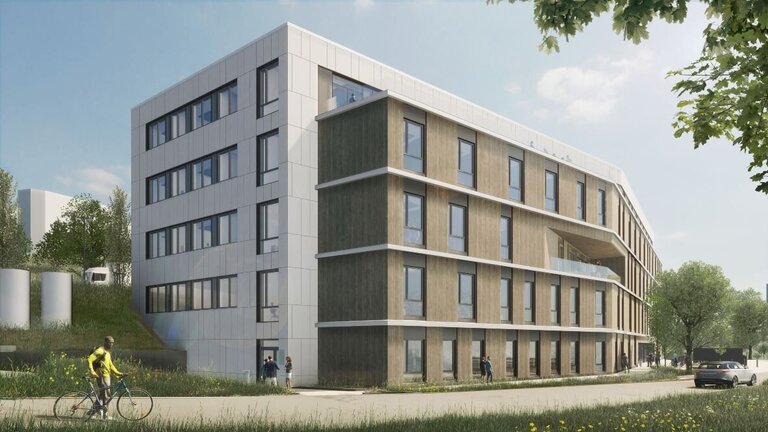The University of Jena’s expectations of buildings grow: research and study must be based on future-proof, flexibly usable and sustainable structures. A modern research landscape is being created on an area of about 5,000 square meters on the Beutenberg campus in the city of Jena. Drees & Sommer supports the construction project of Friedrich Schiller University Jena with a wide range of project management services. The team of experts combined the Building Information Modeling (BIM) and Lean methodologies in order to speed up the planning and construction process and comply with the deadlines for public subsidies. The integrated application of the two tools accelerates the construction process by up to 30 percent.Completion and commissioning of the Microverse Center Jena (MCJ) is scheduled for end-2024.
In addition to about 130 existing buildings, there are numerous new building projects which aim to help the University of Jena to retain and develop its first-class status. However, this process is on a tight schedule because the subsidies for the construction project provided by the national government and the federal state are limited by deadlines. The Federal Ministry of Education and Research and the federal state of Thuringia invest around 20 million euros respectively in the construction of the new research complex MCJ: “The generous support from the national government, the federal state of Thuringia and the Friedrich Schiller University enables us to create a research building for our cluster of excellence which offers enough scope for encounter and synergies.
This will bring the university and the external institutions closer together and create the basis for an internationally visible center of cutting-edge research,“ says Professor Dr. Kirsten Küsel, spokesperson of the Balance of the Microverse excellence cluster.
Top Research ‘Made in Jena’
The MCJ is designed to be the spatial center of the cluster of excellence referred to as Balance of the Microverse, a research network which places its primary focus on the composition of microbial communities and the communication and interaction between them and with their environment. The MCJ is designed to accommodate 170 researchers and 30 non-scientific staff members. The building, which has been designed by hks Architekten, offers the necessary infrastructure for new and existing professorial posts, several junior researcher groups, the Microverse Imaging Center and the main office of the cluster of excellence. Sustainable elements such as a timber façade, a large heat storage and a photovoltaic system with an integrated green roof ensure a high level of energy efficiency.
For more information see our press release.
